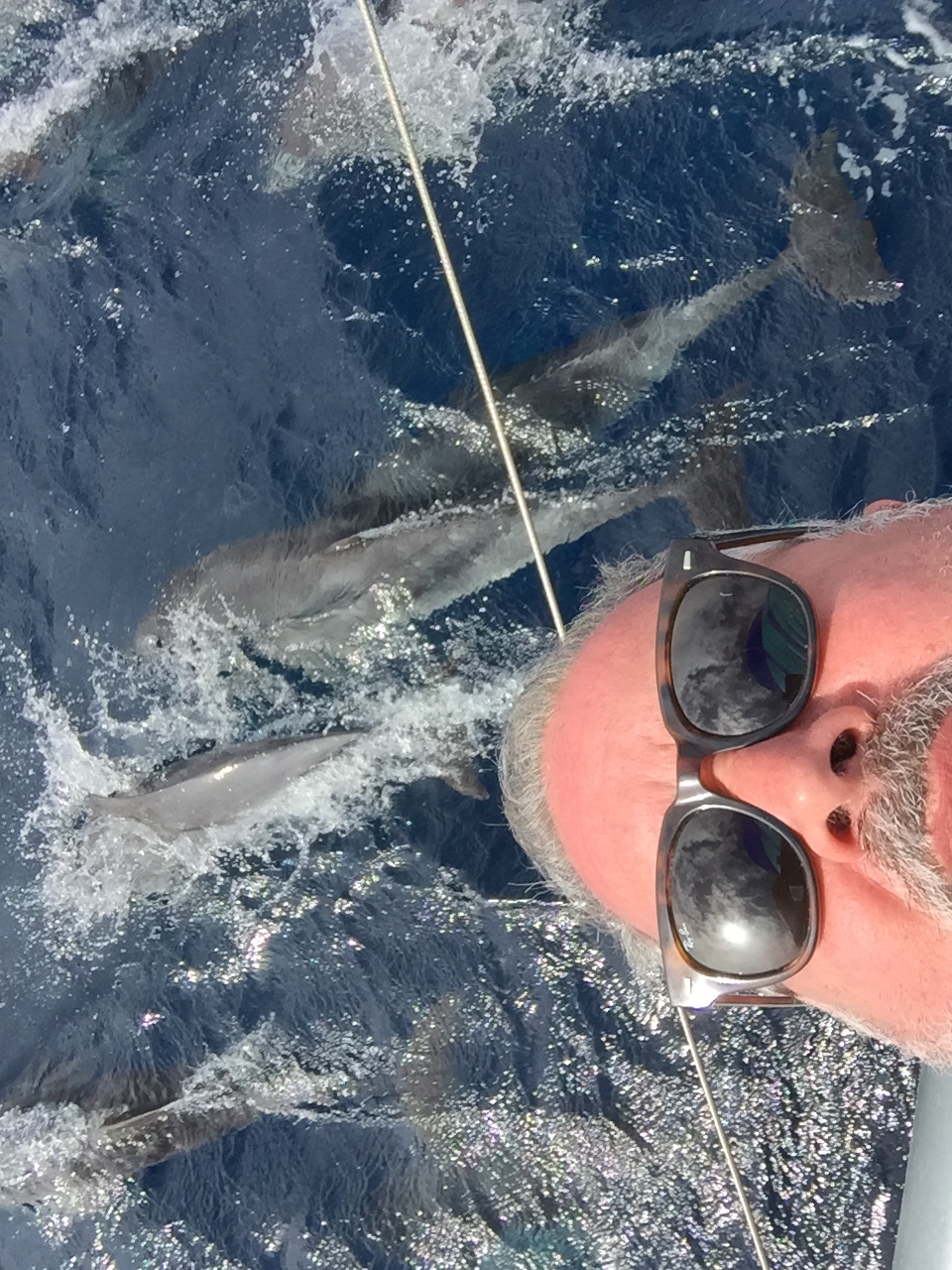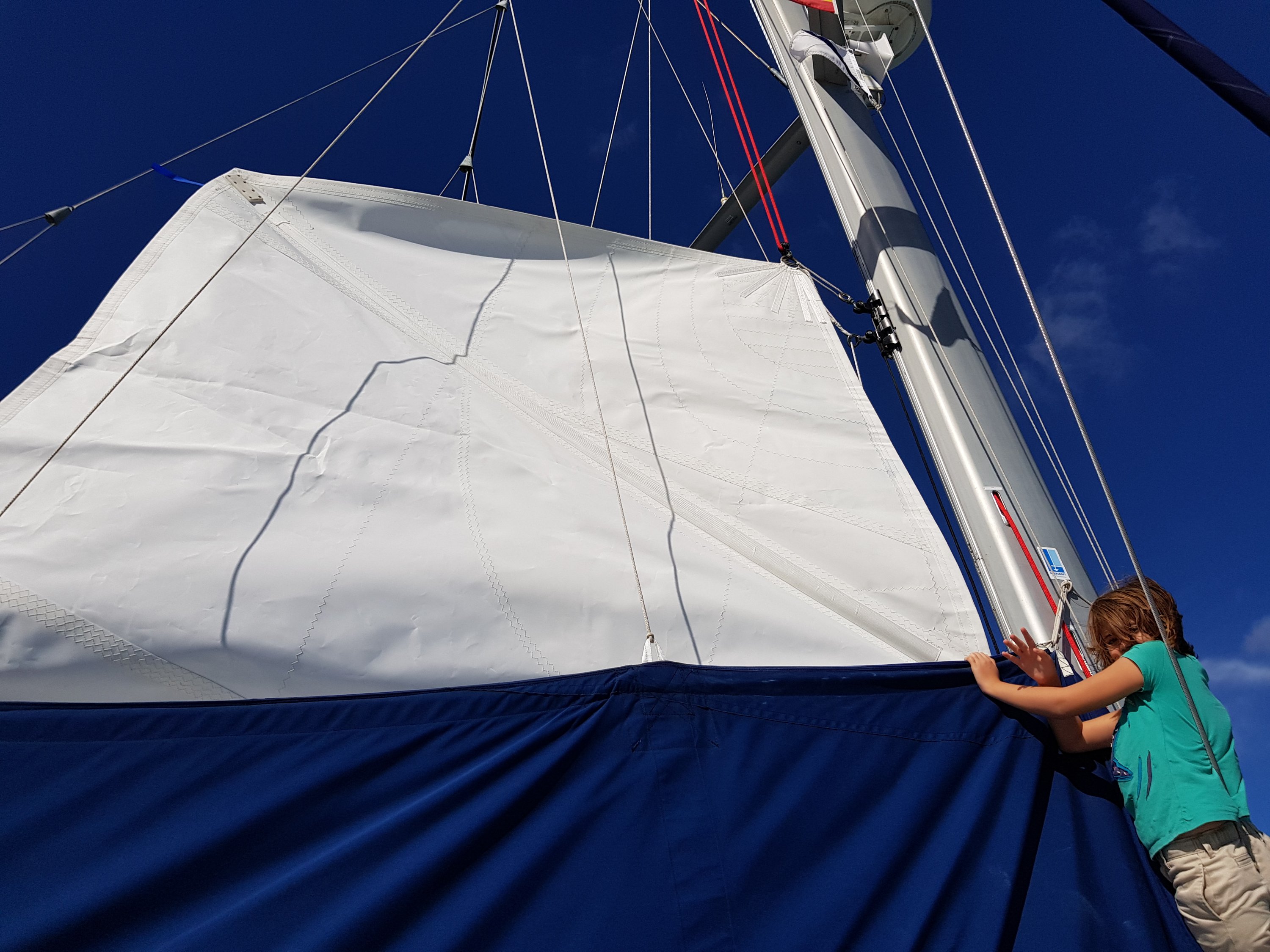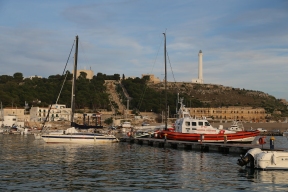Here are the daily updates Jenna wrote during our recent Atlantic crossing from Las Palmas in the Canary Islands to Port Saint Charles in Barbados. I will be following up with a post discussing what worked and what broke during the trip.
We sailed over 2700 miles in 16 days, 7 hours. We averaged 7 knots. We only used our motors for spinnaker changes and to investigate a weak AIS signal we received in the middle of the Atlantic. We sailed straight downwind for over for 2,000 miles with no mainsail, relying on either the jib, parasailor, or spinnaker the entire time for downwind running. We caught 5 fish and had a wonderful time.
Enjoy!
Day 1 – 6 Jan – noon position
26°14’.158N 16°51’.474
143 nm since departure
2550 nm remain

Our position at noon UTC +0:00 is 26°14’.158N 16°51’.474, having motorsailed through a wind shadow at the south end of Gran Canaria and sailed 143 nm in just over 20 hours.
We are currently on a beam reach with three reefs in the main and a reefed jib in 20-30 knot winds in 2.5m beam seas, going 7-10 knots. This is not our favorite sea state, so we’ve adjusted course south of the rhumb line to stay a little more comfortable until the wind shifts around and we can avoid bashing into the waves. Sophie feels very solid.
Richy cooked a fabulous spaghetti dinner last night and all except the kids did night watches under an almost full moon and beautiful stars. Today the guys spotted a sea turtle and a bird. We’re all catching up on sleep and adjusting to our sea legs.
The weather forecast calls for the wind to shift more northeast over the next day, making our ride more comfortable and giving us a better angle for Barbados.
Wishing you a wonderful weekend!
Day 2 – 7 Jan – noon position
24°34’.548 N, 19°12’.796 W
163nm in 24 hours
Less than 2500 nm remaining
VMG 7-9 knots
Our position at UTC +0:00 is 24°34’.548 N, 19°12’.796 W. Current VMG 7-9 knots. We made 163 nm in 24 hours and have less than 2400 remaining to Barbados.
Sophie is now west of Africa! We have passed another continent. Almost two years ago was our last day east of Africa, where celebrated Hazel’s 8th birthday offshore between Somalia and Yemen as we entered the Gulf of Aden on our way to Egypt, over 4,000 nm east of our current position.
The past 24 hours have brought higher seas, but as predicted the wind slowly shifted direction overnight, giving us a better angle. We just switched to our parasailor, which makes our ride much more comfortable and is perfect for going directly downwind.
Last night Jamie cooked a fabulous dinner of ratatouille with sous vide chicken and rice. Richy served up bacon and vegetable scrambled eggs with toast for breakfast.
Later in the morning, a superpod of dolphins joined us and put on a spectacular hourlong show in the sunshine. And we finally put two fishing lines in the water. Life is good.
Day 3 – 8 Jan – noon UTC +0:00
23°25’.637 N, 21°32’.085 W
145 nm
Our position at +0:00 UTC is 23°25’.637 N, 21°32’.085 W. We traveled 145 nm in 24 hours. Current VMG is ~7 knots.
We’ve had an eventful day. A few hours after raising the parasailor, an AIS position alarm went off, followed by a keyboard disconnected system failure. When we tried to reset we had further Raymarine issues, so Jamie proceeded to troubleshoot while I hand steered without instruments for a couple hours. (We have backup Navionics on phones and iPad.) We hand steered until just before sunset, as Jamie discovered at least four faults and we kept blowing fuses as soon as he replaced them. He succeeded getting the autopilot, chart plotter, AIS, keyboard, and radar running in the flybridge, so we dropped the parasailor and unfurled the jib for the night. This slowed us down, but we felt this was the safest option without wind speed instruments. Sophie sailed relatively fast through the night, and I ended up reefing the jib around 10pm when a small squall blew through that pushed boat speed up to 10 knots. Sophie ranged from 5-7 knots for the rest of the night.
This morning Jamie isolated the main problem to a faulty SeaTalk ng 5-Way Connector. Luckily we carry a spare so after replacing it, everything is working again except for the keyboard for the downstairs nav station (which we can easily live without). We assume all of these issues were caused by the first couple days of rough seas we encountered since all systems functioned normally for the first 48 hours of our voyage.
The parasailor is back up for the day, and we are cruising along at 7-8 knots in bright sunshine. Kids are back to Sophie School, and we’re all having fun. Our biggest news of the morning is that Richy carved off the first slices of the Iberian ham leg so we are now taking bets on how long this 10kg will take us to eat.
No one expects it to last until Barbados. Sous vide pork tenderloin is planned for tonight’s dinner menu. We’re still figuring out side vegetables.
Day 4 – 9 January
Position 22°31’.905 N, 24°18’.939 W
166 Nm
Our position at noon UTC +0:00 is 22°31’.905 N, 24°18’.939 W. We traveled 166nm in 24 hours. VMG ~7.5 knots. We’re averaging more than 7 knots during the day, and slower at night.
The wind has settled into more consistent ENE over the last day so we have been able to make progress on the rhumb line to Barbados. We flew the parasailor into the night, but took it down around 10pm after the wind picked up and a few squalls blew through. Richy ended up with some rope burn during the sail change so we ran some drills to practice taking the chute down and hone this process to under 3 minutes in 20+ knot winds so now everyone feels more comfortable with it.
Today is another beautiful sunny day that started with rainbows and raising the parasailor again. The waves are under 3m and mostly following seas now, with rollers coming from the north so our ride is more comfortable with each passing day.
Hazel and Kate cooked magnificent apple pancakes with maple syrup and weißwurst for breakfast. The kids continue working hard at Sophie school. And we’re looking forward to Mexican night for dinner. We’re also two days into the Iberico ham and loving every bite. We feel so fortunate to have such a fabulous crew together for this crossing.
Hope you all have a wonderful day!
Day 5 – 10 January
Position 22°03.826’ N, 27°10.957’ W
161nm
Our position at noon UTC +0:00 is 22°03.826’ N, 27°10.957’ W. That’s 161nm in the past 24 uneventful hours.
We had a quiet night with full jib and put the parasailor up again just after dawn. A large pod of dolphins visited us before our breakfast of Spanish tortilla – one with onion and potatoes, one with spinach and potatoes. Jessica also taught Hazel how to play Skull King this morning, and it is quickly becoming an essential Sophie game.
Hazel wants to bake raspberry muffins after school and Katie is planning Thai fish curry for dinner using some of the mahi mahi we caught in the Med. We still have two lines in the water, but no new fish yet.
Thanks for all the love notes! We love hearing from you.
Day 6 – 11 January
Position 21°44.390’ N, 30°12.478’ W
7.08 knots
172nm
Our noon UTC+0:00 position is 21°44.390’ N, 30°12.478’ W. Sophie covered 170nm in 24 hours, averaging just over 7 knots.
We ran with a full jib overnight and raised the parasailor just before breakfast again. The team is really working well together and our process continues to improve with each sail change. Sea conditions are also better than our first few days. Everyone is comfortable and has their sea legs now. Confused seas continue to slow down our progress a little, but we notice a significant speed increase whenever we pass through a stretch of calmer water or waves come from only one direction.
Katie’s Thai fish curry was an outstanding dinner last night. She is spoiling us with so many wonderful recipes this trip.
Hazel organized an early morning muffin baking party and convinced (tricked?) Jessica to wake up at 6:20am to get started on raspberry, apple, chocolate, and chocolate-raspberry muffins. They were delicious! Kate also cooked up fried eggs with tomatoes, cheese and avocado on toast for our hungry crew.
Less than 1,800 miles to go! Life is good.
Day 7 – 12 January
20°56’.086 N, 33°03’.771 W
167 nm
Our position at noon UTC +0:00 is 20°56’.086 N, 33°03’.771 W, another 167nm in 24 hours.
Richy’s fingers continue to improve. There is no sign of infection, no oozing of any kind. His skin has sealed nicely. He’s airing out his hands for a few hours each day, and while bandaged he is able to do almost everything, although we’re keeping him off sail wrangling, rope handling duties and cleaning dishes, etc. so he stays protected and dry. This morning, Richy cooked us omelettes for breakfast, and he’s spending most of the day driving the boat while playing dj and entertaining us from the flybridge.
Last night was another uneventful starry night. We ate bacon, leek and cheese quiche for dinner after swapping from the parasailor to full jib for the night. With wind and waves behind us, we’re just following the rhumb line.
This morning Jasmin, Kate, Jessica and Leo helped Jamie raise the parasailor at sunrise. The wind and waves have picked up a little more today, and we are zooming right along.
Life is good.
Day 8 – January 13
Position 20°01’.913 N, 36°57’.694 W
172nm
Our position at noon UTC +0:00 is 20°01’.913 N, 36°57’.694 W. We traveled 172 nm in 24 hours with an average speed of 7.166 knots.
The wind has picked up to 20-25 knots with stronger gusts so this morning we opted to leave the jib up for the day. Jessica introduced us to the wind angle setting on our autopilot so we are steering to a wind angle of 179° to port today. How have we not tried this before!? It’s a very smooth ride and we look forward to using it with the parasailer tomorrow.
Jasmin cooked spaghetti aglio olio for dinner last night, and everyone is enjoying a later start this morning since we didn’t have a sail change at sunrise. With the jib up we can also have more fishing lines in the water.
We are closing in on the halfway mark for our crossing, with plans to celebrate tonight with sous vide tenderloin steaks, mashed potatoes and stir fried leeks.
Richy’s fingers continue to improve. He’s keeping bandages off more during the day and even collected a flying fish that landed on the trampoline this morning with bare hands 😉 We have two poles and two hand lines in the water so hopefully more fish will follow.
Wishing you all a fantastic weekend!
Day 9 – January 14
19°03’.740 N, 38°40’.853 W
164 nm
We’re halfway there! Barbados is now closer than Gran Canaria. Our position at noon UTC +0:00 is 19°03’.740 N, 38°40’.853 W. That’s another 164 nm in 24 hours.
To celebrate, we feasted on steak, mashed potatoes, stir fried leeks, and lemon soda, with homemade apple pie for dessert. And the Patriots won! Hazel was up bright and early this morning to prepare French toast for breakfast with help from Katie and Uncle Richy.
We sailed with the jib all day yesterday and overnight. It felt like taking a vacation day without any sail changes and with the autopilot steering by the wind. We raised the parasailor again early this morning. It’s a bit squirrelly right now with occasional +25 knot gusts in 2-3m swells, but the wind forecast calls for more moderate 15-20 knot easterlies this afternoon which should smooth out our ride.
Richy is planning to make a veggie lasagna for dinner. Overall, our fresh vegetable provisions have done well on this crossing. We have a few remaining eggplants and squash that need to be eaten soon and will go into tonight’s lasagna. We still have fresh green beans, cabbage, red peppers, carrots, tomatoes, cucumbers, potatoes and onions, plus bananas, melon, pineapple, oranges and apples for this week. We also have a few bags of green veggies and a variety of berries in the freezer.
Jessica is guest teaching Sophie School today for Hazel, who of course is on her best behavior. Leo is also making progress on his offshore assignments for his new school.
We had a couple hits on the fishing poles last night. One of them was huge fish that ran off a ton of line before snapping it. Hopefully today will be the day…
Hope you have a wonderful day!
Day 10 – January 15, 2018
Position 18°16’.859 N, 41°30’.065 W
NM 167
We had some excitement in the middle of the night. Just before 1am, a 35-knot rain squall blew through, completely drenching Kate and Jessica near the end of their watch. Right afterwards, they smelled something that resembled burned plastic, so they woke up Jamie and began hunting for the source. I joined the search, and Richy and Jasmin were also up getting ready to begin their night watch. After we narrowed down the location to the genset compartment, Jamie ultimately discovered that our 10-year old Proficient Audio amp had burned out. Over the course of the trip, it had been splashed by water coming up through an air vent. Jamie also removed an old outlet that we never use that showed signs of corrosion. There is some more cleanup to do today to rewire outlets under the nav station and inside the computer cabinet that Jamie disconnected as part of the triage. Aside from this, all systems are working.
This morning marks another milestone. We’ve traveled the same distance and days traveled from Gran Canaria as our crossing from Thailand to the Maldives with Richy and Katie a couple years ago. We’ve gotten into a good offshore rhythm on this passage now for day and night watches, meals, school, and music.
The Sophie offshore feast continues. Richy cooked “vegetable” lasagna with more bacon and bechamel than veggies last night. This morning, Hazel made everyone coffee and mixed waffle batter for our waffle and weißwurst breakfast extravaganza. Katie has dubbed me the Waffle Angel since I manned the waffle iron today and served up hot, crispy deliciousness. We are debating which of our other sausages to cook later today and also whether to repeat Quiche Lorraine or make crepes next. Decisions, decisions.
The sun feels hotter each morning and we have bright blue skies with puffy clouds in the distance. We can feel a shift towards the tropics even though we still have a ways to go. Life is good.
Day 11 – January 16
Position 17°35’.691 N, 44°26’.979 W
NM 173
Our position at noon UTC +0:00 is 17°35’.691 N, 44°26’.979 W. We traveled 173 NM, our fastest day of the crossing so far. The weather cooperated so we flew the parasailor nonstop for the past 24 hours and may leave it up for a few days straight now given the weather forecast. Less than 1,000 miles to go!
Fish!Fish!Fish! By far the most important event of yesterday is the 5 kg mahi mahi we caught. Jamie had rigged an alarm for the hand line using an empty can and it worked perfectly. Leo, Kate and Jessica worked together to pull in the line and Jamie gaffed the fish. We are looking forward to grilled mahi mahi for lunch today.
We’re feeling the tropics approaching as the temperature and humidity increase each day. Sunblock and hats are out and we’re starting to hide from the sun during the heat of midday. Air temperature 23°C. Water temperature 26°C. Wow, have we missed this!
We ate a spectacular German dinner of Nuernbergerwurst, potato salad and sauerkraut, and we’ll make roasted pepper, bacon and goat cheese quiche for tonight’s dinner as a follow on to our fish feast midday. We’re starting to feel the pressure of only a handful of days remaining on the crossing. There are so many more dishes we want to prepare before we arrive. Maybe we’ll need to move to four meals a day so everyone can cook their favorites this week.
Last night on watch Kate and Jessica had some excitement. A flying fish landed on the roof of the main cabin that sounded like “whispering elves wings,” according to Jessica, as it bounced around on the deck. Kate saved flying fish Pete, as he has been affectionately named, just in time. He gave her a little wink in thanks before swimming off.
We hope you are enjoying your week as much as we are.
Day 12 – January 17
Position 17°08’.591 N, 46°47’.217 W
NM 145
Our position at noon UTC +0:00 is 17°08’.591 N, 46°47’.217 W. In 24 hours we moved 145 NM. Yesterday and overnight we flew the parasailor, but given the light winds forecasted, this morning we switched to to spinnaker. We assume we will go about a knot faster in light air with the full spinnaker. The next couple days offer an opportunity for us to do some head to head comparisons of our downwind sails.
We had an exciting adventure yesterday afternoon. Richy, Kate and I were in the flybridge when we picked up a weak AIS signal about 3.5 NM from Sophie. We couldn’t see a boat with the naked eye or through binoculars, which we thought was odd given the close range. The AIS screen showed the signal moving at .9 knots with the wind, but then the AIS signal dropped out after a few seconds. Jamie came up and we tried hailing on VHF with no answer, so he quickly decided we should drop the sail and motor towards the location just in case the signal was coming from a boat in distress, liferaft or someone in the water. We motored into 20 knot winds in the approximate direction of where we thought it would drift and eventually spotted a tiny boat that flashed us with a mirror as we got closer.
We were quite relieved to discover a French offshore rowboat with two gentlemen on board, Philippe and Gilles, who are rowing across the Atlantic. We talked via VHF and learned that they are 58 and 60, and one of them has Parkinson’s Disease. They are rowing across the Atlantic to raise awareness that is possible to do almost anything with Parkinson’s when you keep your body strong. Their website is
http://quinquatlantic.fr They departed the Canary Islands on December 15 and expect it will take another 20 days for them to reach Martinique. We feel very fast by comparison and quite fortunate to have met up with them 900 miles from Barbados. They are the first boat we’ve seen in more than 10 days.
Unfortunately, when we were within hailing distance of the rowboat, we experienced an error on our engine shifter. This is a problem we first encountered in Madeira when the engine mounts failed. The cable between the ZF controller and the sail drive is still a little bent causing too much resistance and a subsequent error message. It’s an easy adjustment and 20 minutes later we were sailing again with the parasailor past the rowboat, snapping many pictures of each other. We can’t wait to swap pictures with them after they arrive to Martinique.
We had a fabulous grilled lemon mahi mahi feast with rice and ginger stir fried vegetables for lunch yesterday, followed by roasted pepper, bacon and goat cheese quiche for dinner. Jasmin has spoiled us again this morning with superb homemade kaiserschmarrn and apple mousse.
Hazel took her first night watch with Uncle Richy last night, and continues to grow more interested in learning to drive Sophie. She has also enlisted Jessica and Kate as guest teachers for most of her school subjects. They are doing a fabulous job teaching and I’m not really sure what to do with all of my new free time.
Life is good in the Atlantic.
Day 13 – January 18
Position 16°19’.272 N, 49°44’.808 W
NM 169
Our position at noon UTC +0:00 is 16°19’.272 N, 49°44’.808 W. We traveled 169 NM in 24 hours flying the full spinnaker. 600 miles left to Barbados.
Leo and Hazel have a new cousin!!! Olivia Rogers, 7 lbs. 4 oz. was born at 2:31 EST January 18, 2018. Please join us in congratulating my sister Julie and her husband Silas on their beautiful girl. Welcome, Olivia! We love you so much and can’t wait to meet you in person.
Yesterday was a good day for fish. We caught a 3.6 kg wahoo on the fishing pole. Richy, Kate, Jessica and I doused the spinnaker and lowered it to slow the boat so Jamie could reel in the wahoo. Grilled wahoo and artichoke risotto are next on the menu. Unfortunately we lost a big mahi mahi that was on one of the hand-lines at the same time the wahoo hit.
Later in the afternoon, Leo and Hazel spotted another fish on the line while I was sleeping. For the first time ever, Leo reeled in, cleaned, seasoned and baked the fish all by himself as a surprise appetizer for dinner. We don’t know exactly what type of fish it was. Maybe a type of trevaly? Regardless, Leo is very proud of his accomplishment and the fish was tender and delicious.
Richy and Kate made stromboli roulades for dinner – stuffed rolled pizzas with a mix of salami, ham, cheese, tomato, roasted peppers and olives. To celebrate crossing the 2,000 mile mark of the passage, we watched the movie Battleship (because Rihanna) on the big screen. Who doesn’t love Rihanna?
Hazel and Leo did their evening watch with Uncle Richy, which includes quizzes on the electronics, and then we enjoyed a starry and calm night.
We hope you all have a wonderful day.
Day 14 – January 19
Position 15°35’.688 N, 52°19’.492 W
155 NM
Our position at noon UTC +0:00 is 15°35’.688 N, 52°19’.492 W. We traveled 155 NM in 24 hours, continuing to fly the full spinnaker day and night for 48 hours straight. We are 450 miles from Barbados.
Happy birthday, Stephen! We love you and hope you had a wonderful day.
Double take down! Leo and Kate executed a cousin double mahi mahi takedown on the hand lines. Each fish weighed 4 kg.
Leo cleaned and fileted the mahi mahi under Jamie’s supervision. We vacuum sealed and froze all of it since we currently have a fresh fish backlog here on Sophie.
For lunch we ate pineapple fried rice and grilled marinated wahoo. This is our first wahoo since Southeast Asia and we had forgotten just how much we love wahoo. For dinner we cleared out our containers and did a leftover smorgasbord of fish, quiche, pizza rolls, cheese, prosciutto and more. Things are getting pretty serious now that we only have a few days of passage cooking left and so many dishes we still want to make. Risotto, carbonara, pork tenderloin with apples and onions, homemade baguettes, chicken tikka masala… we will run out of time.
Kate and Jessica treated Hazel to a special day of German style Sophie School, including a strict schedule, homework and sailing class with Uncle Richy. She had a blast.
It’s a calm and relaxing ride as we tick off the miles and watch the waves. The boat systems are all working well. There is a lot of laughter on Sophie. Life is good.
Day 15 – January 20
Position 14°46’.685 N, 55°02’.761 W
165 NM
Our position at noon UTC +0:00 is 14°46’.685 N, 55°02’.761 W. We traveled 165 NM in 24 hours, continuing to fly the full spinnaker day and night for 72 hours straight. We are under 300 miles from Barbados.
We’re in the home stretch now and counting down the miles as we calculate our average speed and factor in a weather forecast that calls for 15-22 knot winds and slightly higher waves over the next 24 hours. We will change sails at some point as the wind increases, but we aren’t sure yet when that will be and are thoroughly enjoying this spinnaker run for as long as it lasts.
Yesterday Hazel renamed Friday Family Movie Night to Friday Family Film Festival. We kicked off with a girls night viewing of Mama Mia and even did face masks. Spa treatments may continue with pedicures before we arrive.
We made artichoke risotto for dinner and had barbecued sous vide chicken with leftover rice for lunch. Fish tacos are planned for tonight.
We’ve noticed that we’re running the generator more frequently on this passage than previous trips. There could be several reasons for this. Our autopilot could be drawing a lot more with the sensitivity set on high. Another possibility is that our refrigerators and freezer are working harder in the tropical heat. We are also charging more electronics than usual with 8 people on board.
There is a significant amount of seaweed floating in the water here. This started a couple days ago and has grown denser during the last day. We believe patches of it extend for hundreds of miles and we can see it from horizon to horizon. We wonder whether it’s normal in this region, a remnant of hurricane season, or an impact of global warming. We ended up reeling in the fishing lines after repeatedly snagging plants all day yesterday and again this morning so we are on a fish break for now.
Sunshine, blue skies and warm wind. We couldn’t ask for more.
Day 16 – January 21
Position 13°42’.969 N, 58°12’.302 W
NM 194
Our position at noon UTC +0:00 is 13°42’.969 N, 58°12’.302 W. We traveled 194 NM in 24 hours.
It’s been a rocket sleigh ride overnight. We finally swapped sails yesterday evening after 81 hours flying the full spinnaker, our longest stretch ever, and put the parasailor back up. We’ve averaged 20+ knot winds overnight with gusts into the 30s and boat speed of 8-12 knots with multiple rain squalls. We are now just 91 miles from our anchorage in Barbados and expect to arrive this evening, give or take a few hours.
Sophie is surfing down waves as short gusty rain squalls pass through the area today. It’s speedy, but not particularly comfortable. Nobody slept much in the rolly seas overnight.
Hazel will complete her final day with Kate and Jessica as guest Sophie School teachers. She has loved every minute with them.
We will cook pasta carbonara – comfort food – for our final passage meal, and we are all looking forward to rounding the northern point of Barbados, completing the passage, dropping the anchor and getting a full night’s sleep.
Hope you’re having a wonderful weekend!
Day 16 part 2 – January 21
Position 13°15’.666 N, 59°38’.766 W
NM 95
Hello Barbados! Sophie has arrived. We just dropped anchor at 7:21pm local time at 13°15’.666 N, 59°38’.766 W after 95 miles since 8am local today. Overall, the passage took 16 days and 7 hours, and we averaged just over 7 knots.
After a stormy morning, we had a beautiful warm sunny afternoon as we caught sight of land and approached over several hours. We flew the parasailor all day until we turned the corner at the north end of the island.
A pod of dolphins welcomed us to Barbados with a spectacular jumping and flipping show — one of the best we have ever seen.
After the dolphins left, we motored the final two miles as the last glimmer of twilight disappeared. It turns out we anchored right next to our friends on Ventus who just arrived earlier today.
We’re so happy to be here, safe and sound. Now for some celebration and sleep.
Thanks for following along with our journey.
Love,
Jenna, Jamie, Leo, Hazel, Richy, Kate, Jasmin and Jessica
PS … Have we mentioned lately how lucky we are?
PPS … Have we mentioned what a great crew we had for this passage? We are extraordinarily thankful for their help and company.













































 Well, it has been 30 months and thousands of miles since we crossed the Atlantic on Sophie, and it has also been 30 months and hundreds of false starts since we wrote our last post on this blog.
Well, it has been 30 months and thousands of miles since we crossed the Atlantic on Sophie, and it has also been 30 months and hundreds of false starts since we wrote our last post on this blog.









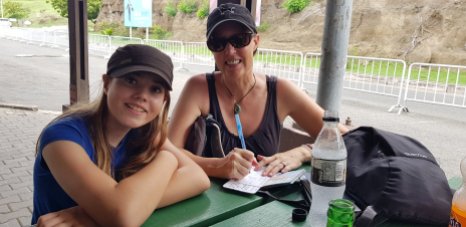


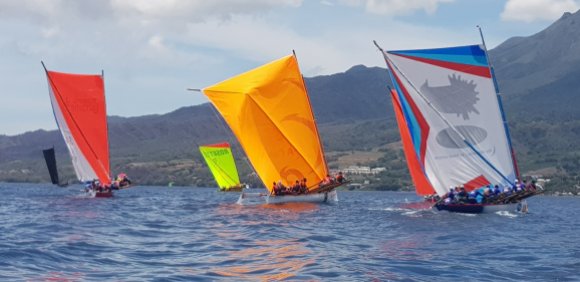









































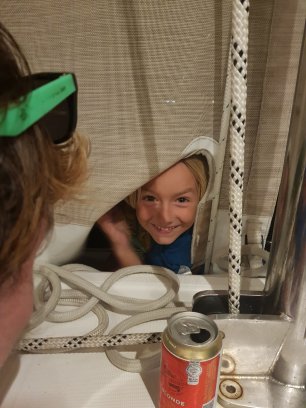





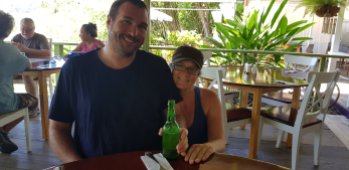






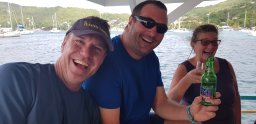



































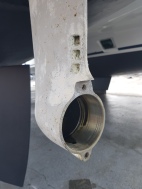





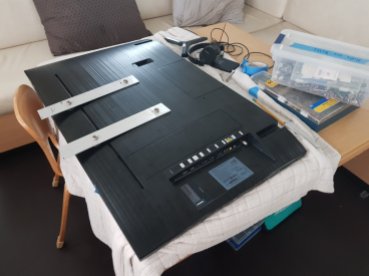


















 Yep, that is why we are finally writing a blog post, and yes, those are lobsters on my shorts. Maine!
Yep, that is why we are finally writing a blog post, and yes, those are lobsters on my shorts. Maine!




 Here is a recap of how Sophie and her gear fared on our recent Transatlantic passage from the Canary Islands to Barbados. We covered over 2,700 nautical miles in 16 days and 7 hours, averaging slightly above 7 knots for the trip. We sailed straight downwind on the rhumb line for 2,000 miles using either a genoa, an 1800 square foot Parasailor spinnaker, or a 2100 square foot symmetric spinnaker. We put away our mainsail on the second day of the passage and never used it again. We only used our diesel engines for sail changes and for a brief AIS signal investigation in the middle of the Atlantic. We had a crew of eight including our children Leo and Hazel, who tried to do school every day.
Here is a recap of how Sophie and her gear fared on our recent Transatlantic passage from the Canary Islands to Barbados. We covered over 2,700 nautical miles in 16 days and 7 hours, averaging slightly above 7 knots for the trip. We sailed straight downwind on the rhumb line for 2,000 miles using either a genoa, an 1800 square foot Parasailor spinnaker, or a 2100 square foot symmetric spinnaker. We put away our mainsail on the second day of the passage and never used it again. We only used our diesel engines for sail changes and for a brief AIS signal investigation in the middle of the Atlantic. We had a crew of eight including our children Leo and Hazel, who tried to do school every day.

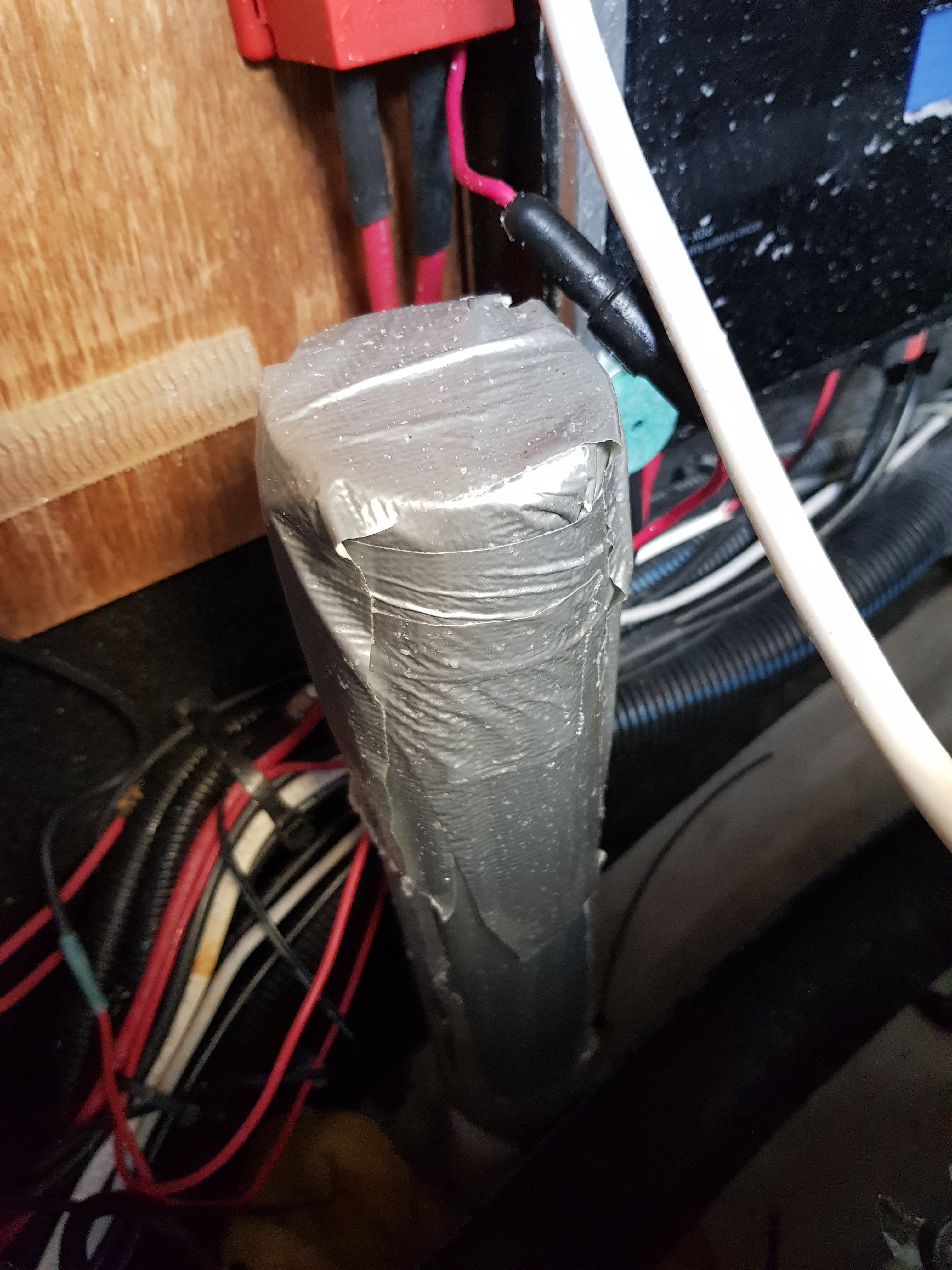





 I considered taking one of the battens that supports our mainsail cover (pictured above) and cutting it to serve as a temporary replacement for the missing sail batten. But at this point in the Barbados passage we were about to turn right and sail straight downwind for 2,000 miles without using the mainsail. So I decided against doing the temporary replacement. I did, however, realize that the mainsail cover batten sleeve has enough extra room to store a spare full-length batten. We plan to do so. More spares are a good thing.
I considered taking one of the battens that supports our mainsail cover (pictured above) and cutting it to serve as a temporary replacement for the missing sail batten. But at this point in the Barbados passage we were about to turn right and sail straight downwind for 2,000 miles without using the mainsail. So I decided against doing the temporary replacement. I did, however, realize that the mainsail cover batten sleeve has enough extra room to store a spare full-length batten. We plan to do so. More spares are a good thing.


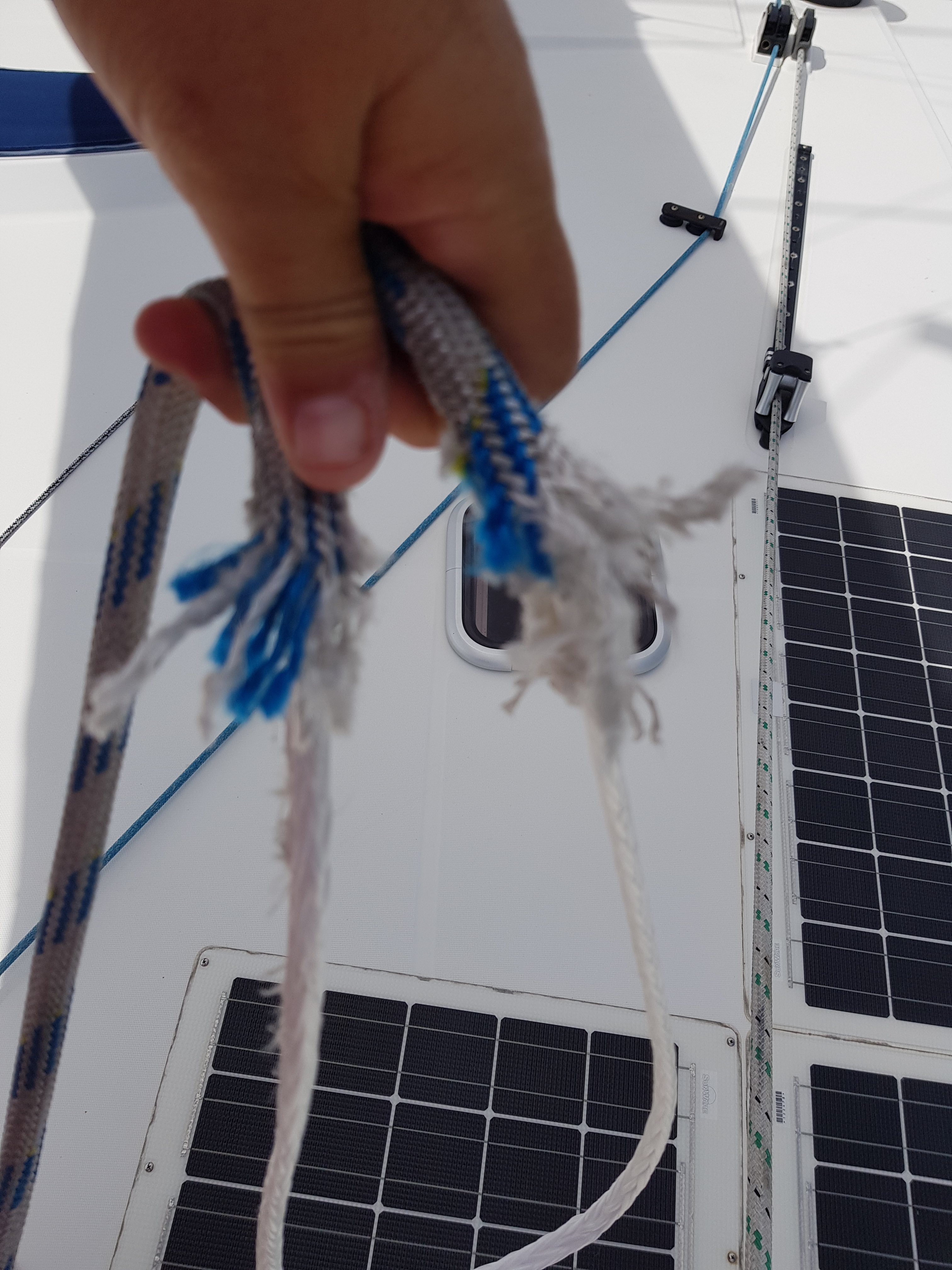






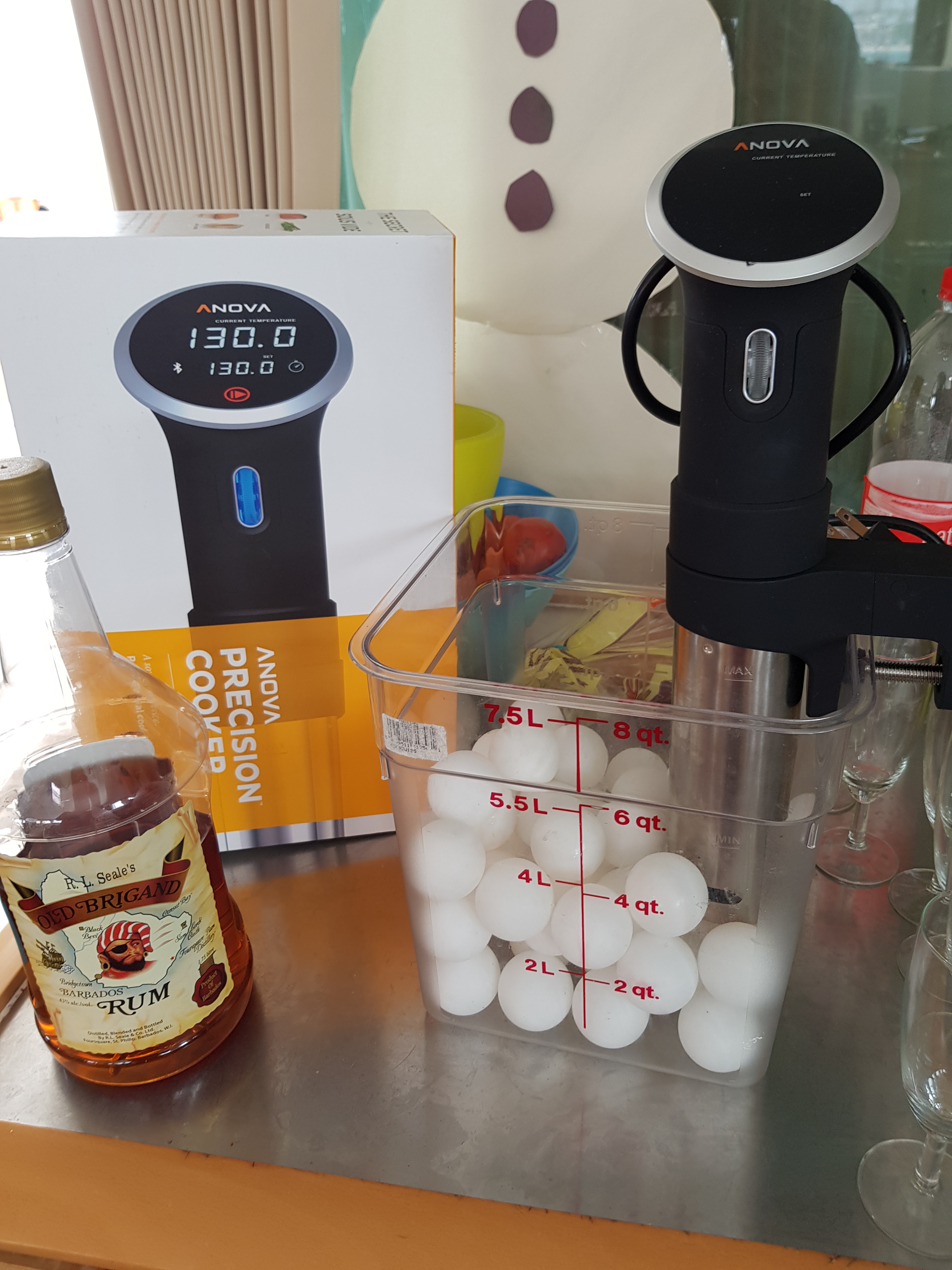



 The result was great fun with pork. There was no shortage of protein on this passage.
The result was great fun with pork. There was no shortage of protein on this passage.



 Our position at noon UTC +0:00 is 26°14’.158N 16°51’.474, having motorsailed through a wind shadow at the south end of Gran Canaria and sailed 143 nm in just over 20 hours.
Our position at noon UTC +0:00 is 26°14’.158N 16°51’.474, having motorsailed through a wind shadow at the south end of Gran Canaria and sailed 143 nm in just over 20 hours.
